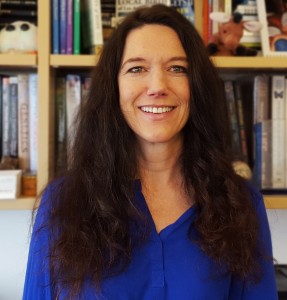CSUN Receives $2.77 Million to Build ‘Bridges’ to Regenerative Medicine
They may discover the key to help repair spinal cord injuries, help paralyzed children run again or find the cure for cancer.
Fifty undergraduate students from California State University, Northridge will get the chance of a lifetime to conduct stem cell research alongside some of the top scientists in the country as part of a $2.77-million grant to the university. The grant from the California Institute for Regenerative Medicine (CIRM) continues a stem cell research and regenerative medicine “Bridges” program between CSUN and UCLA that started in 2009.

CSUN biology professor Cindy Malone
“When we first launched the [CSUN-UCLA Bridges to Stem Cell Research Program], we didn’t know how successful it would become,” said CSUN biology professor Cindy Malone, who coordinates the program. “Our students are taking part in cutting-edge research alongside some of the greatest minds in stem cell research. They are presenting papers at some of the top professional conferences in the world. When they graduate, they are highly sought after by the top medical and graduate schools in the country, and rightly so.”
Randall Mills, CIRM’s president and CEO, said the Bridges program’s goal is to prepare undergraduate and master’s-level students in California for successful careers in stem cell research.
“That’s not just a matter of giving them money, but also of giving them good mentors who can help train and guide them — of giving them meaningful engagement with patients and patient advocates — so they have a clear vision of the impact the work they are doing can have on people’s lives,” Mills said.
The new five-year grant will fund the “Stem Cell Scientist Training Program,” which is similar to the CSUN-UCLA Bridges to Stem Cell Research Program, with the exception that the new program is exclusively for undergraduate students. The earlier program was open to CSUN graduate and undergraduate students.
“We will continue to partner with UCLA as our internship-host institution,” Malone said. “There, our students will perform 10 months of intensive stem cell research. New research training courses will be launched in the next year to prepare our undergraduates for the new Stem Cell Scientist Training Program and for the increasingly technical job market in California.”
As with the old Bridges program, 10 students will be selected during each year of the grant to conduct independent research, under the guidance of UCLA scientists and medical doctors who are conducting groundbreaking experiments in adult and embryonic stem cell research. While interning, the students will receive a stipend of $2,500 per month and travel fellowships to attend CIRM symposia and a professional conference.
Miller said that by the time the students complete their internships, they are skilled researchers who are immediate assets to any biotech company, graduate program or research institute.
“The Bridges program has been incredibly effective in giving young people, often from disadvantaged backgrounds, a shot at a career in science,” said Jonathan Thomas, chair of the CIRM board.
Eliana Ochoa-Bolton, 26, spent much of her senior year at CSUN working as part of the Bridges program in the laboratory of UCLA professor Samantha Butler. During the academic year 2015-16, Ochoa-Bolton was one of only two undergraduates on a team of mostly doctoral and post-doctoral students. The team was studying the mechanisms that establish the nervous system, in hopes of one day regenerating damaged or diseased neural circuitry in people who have spinal cord injuries. Ochoa-Bolton’s job was to insert proteins and other growth factors into stem cells.
“It was such an amazing opportunity,” Ochoa-Bolton, now a master’s student in CSUN’s Department of Biology, said of the Bridges program. “I got to do work I didn’t think possible as an undergraduate.”
Ochoa-Bolton continues to volunteer in Butler’s UCLA laboratory and plans to pursue a doctorate and possibly do research on autoimmune diseases.
Lorenzo del Castillo, 22, will graduate from CSUN this December with a Bachelor of Science degree in cell biology. He worked in Butler’s laboratory during the 2014-15 academic year. He made such an impression that Butler hired him to continue working in her lab on stem cell projects. The pair recently received supplemental funding from the National Institutes of Health to continue some projects into the coming year.
“Sometimes, when I think about what I’m doing as an undergraduate — doing research on stem cells to understand spinal cord development — I think, ‘wow,’” Del Castillo said. “It’s pretty cool, all the opportunities I’ve had. Not very many undergraduates get the chance to work in a highly scientific environment like I have, and it’s because of the Bridges program.”
Del Castillo plans to get his doctorate in developmental biology, and he said he hopes to one day have his own laboratory at a university, where he wants to research embryonic cell development.
“It’s interesting how something goes from being one cell and develops into a complicated organism,” Del Castillo said. “That fascinates me.”

 experience
experience